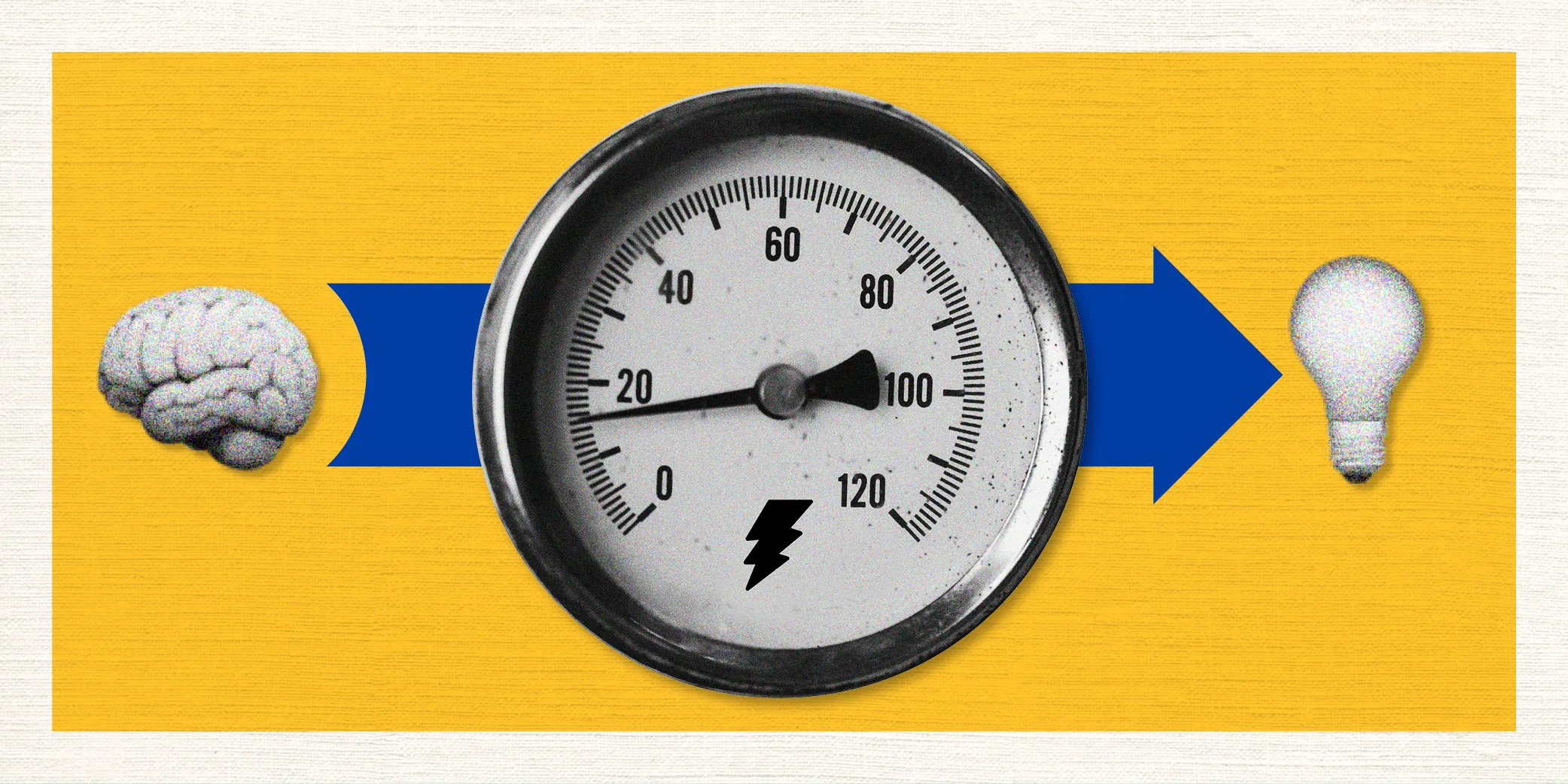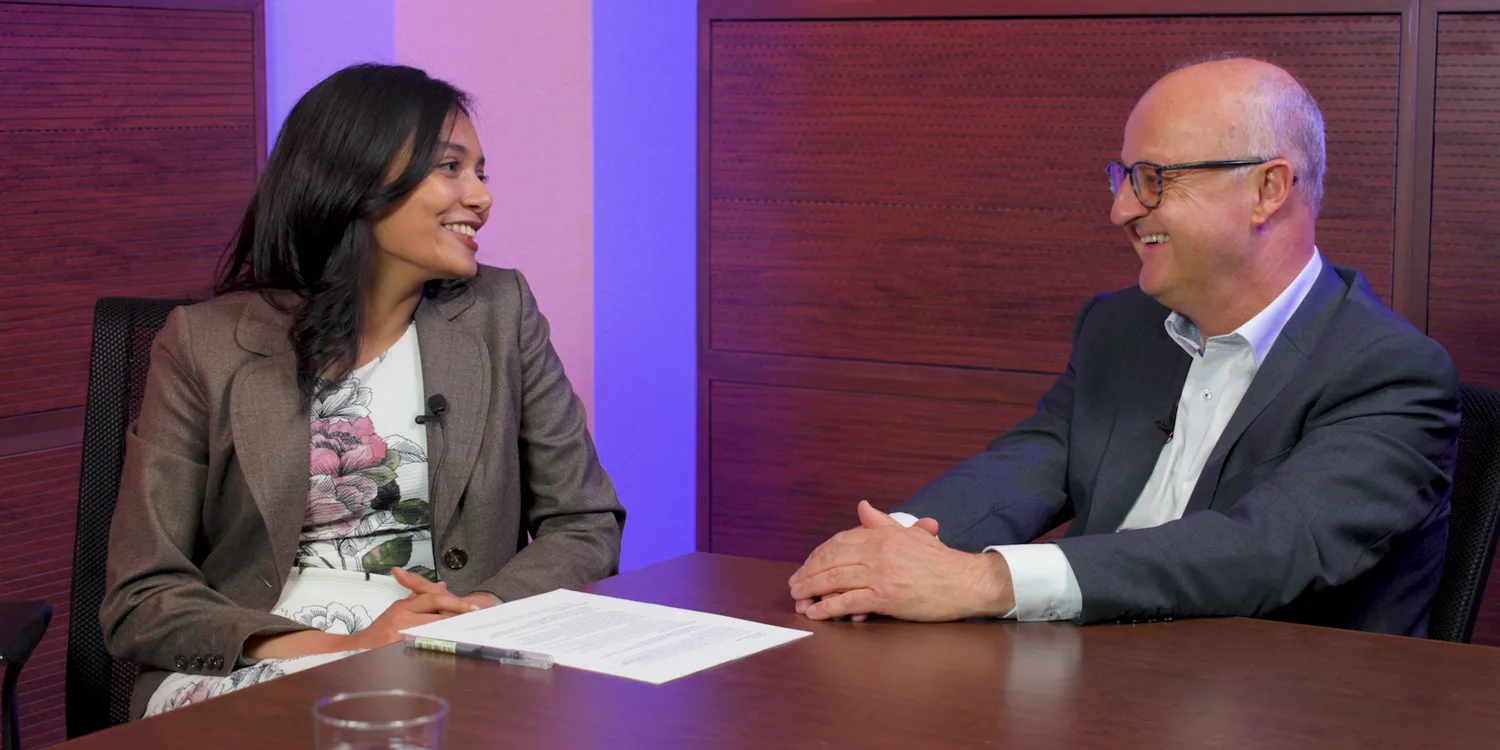Is measuring productivity the best way to gauge innovation?
October 15, 2025

Rethinking the impact of innovation
We’re all familiar with the productivity problem in Canada. As national laments go, it’s about as ubiquitous as complaints about the Leafs. But when it comes to innovation, how much does assessing productivity really tell us? That’s the question Sana Maqbool, MaRS’s manager of policy research, takes up below. Maqbool’s been studying this issue for years, and in her sharp and considered analysis, argues that meaningfully evaluating the impact of innovation means measuring the things that truly matter. And that, in turn, builds an innovation ecosystem that’s better for everyone.
Also, in this week’s newsletter:
Stories from the ecosystem, upcoming events and the hottest jobs this week
“The real innovation paradox is that innovation doesn’t always improve our lives.”
We’re preoccupied with the wrong metrics. This may sound heretical, especially given the current Canada Strong ethos, but fretting over productivity and GDP ultimately won’t help improve the lives of Canadians. It might be time to rethink the aims of our country’s innovation ecosystem.
Innovating innovation
First, let me define what I’m talking about. Innovation is the process of turning ideas into value, transforming imagination into something that improves how we live and work. At its best, innovation policy isn’t just about advancing technology; it’s about enabling economic development and improving the quality of life for all. For decades, we’ve treated innovation as the engine of progress, the force driving productivity, competitiveness and prosperity. As economists sought to quantify this force, they turned to a familiar measure: Gross Domestic Product (GDP). The logic was simple: higher GDP signals higher productivity, which reflects a nation’s capacity to innovate. Over time, GDP became a convenient shorthand for progress, a numerical stand-in for creativity, ingenuity and advancement.
But somewhere along the way, the measure began to eclipse the meaning. We started to equate growth with innovation itself, assuming that if GDP was rising, society must be innovating successfully. In reality, this narrow view overlooks much of what innovation truly represents. Not all progress shows up in economic output.
If innovation policy is ultimately about improving the human condition, we need to rethink what we define as success.
Measuring impact — not activity
Traditional innovation indicators such as R&D spending, patent filings and the number of startups capture activity rather than impact. They tell us how much effort we’re investing — not whether that effort is making life better. Economists often refer to the innovation paradox as the gap between a country’s investments in R&D, talent and infrastructure and its ability to turn those inputs into tangible economic benefits like higher productivity. But that definition misses the deeper truth. The real innovation paradox is that innovation doesn’t always improve lives.
For instance, in workplaces where automation or algorithmic management is deployed too quickly, research points to increased stress, loss of autonomy and burnout. These harms ripple outward. Unemployment and underemployment are strongly linked to higher risks of depression, anxiety and financial strain. The loss of stable income can lead to housing insecurity, food shortages and growing inequity, outcomes that GDP cannot reflect.
As well, in many advanced economies, including Canada, the benefits of innovation are increasingly concentrated among certain regions and social groups, while others face stagnating wages, unaffordable housing and limited access to opportunity. This limits participation in innovation itself. When large parts of society are excluded from contributing, we lose ideas, resilience and potential. In this way, inequality is not only a social outcome, it’s an innovation problem.
What we need to build
Innovation depends on a continuous loop between inputs and outputs. The inputs are human capital, skills, infrastructure and the social conditions that allow people to apply new ideas effectively. When these inputs are strong, innovation flourishes and the outputs create economic and social value. But when innovation produces negative social outcomes, it weakens the foundation that sustains it. Rising unemployment, declining mental health and growing inequality erode productivity and lower GDP, which then reduces investment in education, research and training. Over time, this creates a negative feedback loop where poor outcomes reduce the capacity for progress.
To build a sustainable innovation ecosystem, we need to keep this feedback loop positive. That means investing in the inputs that matter most: education, health, well-being and inclusion, and measuring outcomes that reflect human progress. Counting patents tells us how busy we are, not how well we are doing. We need to know whether innovation improves equity, strengthens resilience and enhances quality of life.
Canada’s data on life satisfaction illustrates this point. The Smart Prosperity Institute and the Institute for Competitiveness and Prosperity, for example, define the prosperity gap as the difference between Ontario’s GDP per capita and that of its North American peers. It measures shortfalls in economic output, not in well-being. It can’t tell us whether innovation is improving lives, reducing inequality or supporting social resilience.
Outside of Canada, however, tools like the Global Innovation Index and the OECD’s Better Living Index measure innovation with more nuance. Canada doesn’t do particularly well in these indices. While we’ve enjoyed modest GDP growth in recent years, we rank just 17th in the Global Innovation Index, and the Better Living Index — which measures health, education, safety, community and work-life balance — places us 10th in the world.
But these data are also still underused in policy design. We need to start integrating it into the design of programs and policies. By aligning entrepreneurial support programs, like public procurement and grants, with insights about inclusion, well-being and equity, we can build an innovation ecosystem that not only drives growth but delivers better lives for everyone. – Sana Maqbool
What do you think? Drop us a line at media@marsdd.com.
Stories from the ecosystem
BRAIN GAIN: In the National Observer, Liam Gill, who heads up the Capital Program at MaRS, argues that Trump’s H1-B visa fee gives Canada a golden opportunity to rebuild our tech system.
HEALTH: Time rounds up the top health companies in the world, including Canadians Mikata Health, Surgical Safety Technologies and Muse.
CLIMATE: Toronto’s Cyclic Materials becomes the first Canadian company to crack MIT Technology Review’s annual list of climate tech companies to watch.
SOCIAL IMPACT: Women-led companies like ImaginAble and Xatoms are creating tech for good.
DESIGN: Métis architect David Fortin (keynote speaker at Azure’s Human/Nature conference) talks about the need for innovations (new and old) in the built environment.
FINANCE: “Canada’s Missing Pot of Gold” — John Ruffolo makes the case for a sovereign wealth fund for domestic companies.
In depth: Catalyzing breakthrough therapies
In this 11-minute video, MaRS’s Mayisha Sultana talks to Novo Nordisk’s Uli Stilz about what’s needed to take novel therapeutics from concept to commercialization.
Upcoming events
- MaRS Sessions, a new free webinar series where industry leaders discuss cutting-edge innovations, kicks off with ventures Innovate-Ops, Litmus and Vention. October 14, 1 p.m. Register here.
- At this month’s MaRS Morning, Solve For X’s Manjula Selvarajah speaks with Dion Kelly, CEO of Possibility Neurotechnologies, about the power of brain-controlled tech. October 23, 9–11 a.m.
- The Gairdner Science Week Laureate Lectures features talks by Gairdner Award recipients Prativa Baral, Jennifer Stinson, Michael Welsh. October 23, 9 a.m.–1:15 p.m. Toronto.
- The Neuroscience of Meditation is a first-of-its kind summit exploring what happens in the brain during meditation. October 24. Toronto.
- The Azure Human/Nature conference on climate change adaptation brings together architects, urbanists, business leaders to spark collaboration on greener spaces and cities. October 29 and 30. Toronto.
- MaRS Climate Impact is back, with special guests Adam Becker (author of More Everything Forever), Sightline Climate’s Kim Zou, NSTX’s Chris Bryson. Early bird tickets available now. December 2 and 3. Toronto.
For more, visit our events page.
Careers: The hottest jobs in tech this week
- CoLab, which builds software to help engineers better collaborate, has several open positions, including principal risk and compliance analyst, LLM engineer and junior IT analyst. (St. John’s)
- Permalution, a cleantech startup that harvests water from fog and clouds, is looking for digital marketing and executive support, and a sales development lead. (Sherbrooke, Que.)
- Homewise, the digital home ownership platform, is hiring for several mortgage advisor positions. (Toronto)
For more, visit our jobs page.
In the queue: What we’re reading, watching and listening to at MaRS
This week: Nicole Sanchez, who leads client engagement for MaRS’s Momentum program, managing high-growth portfolios and executive peer-to-peer forums where they share challenges and best practices.
- A suspenseful page-turner about motherhood: “Kristin Hannah’s Night Road is an emotional, beautifully written story about friendship, motherhood and forgiveness — a reminder of how one night can change everything.”
- A peak behind the C-suite curtain: “I’m a big podcast listener during commutes, and Steven Bartlett’s The Diary of a CEO is my go-to for both business and life insights. A recent standout: the episode with Roman Yampolskiy on how AI could end humanity — fascinating, a little terrifying and incredibly thought-provoking.”
- One last beach read before the season’s over: “Abby Jimenez’s Just for the Summer is a light, witty, heartfelt romance that’s perfect for unwinding — and turning your brain off.”
Photo illustration by Stephen Gregory, photo: Unsplash
Sign up for our newsletter

